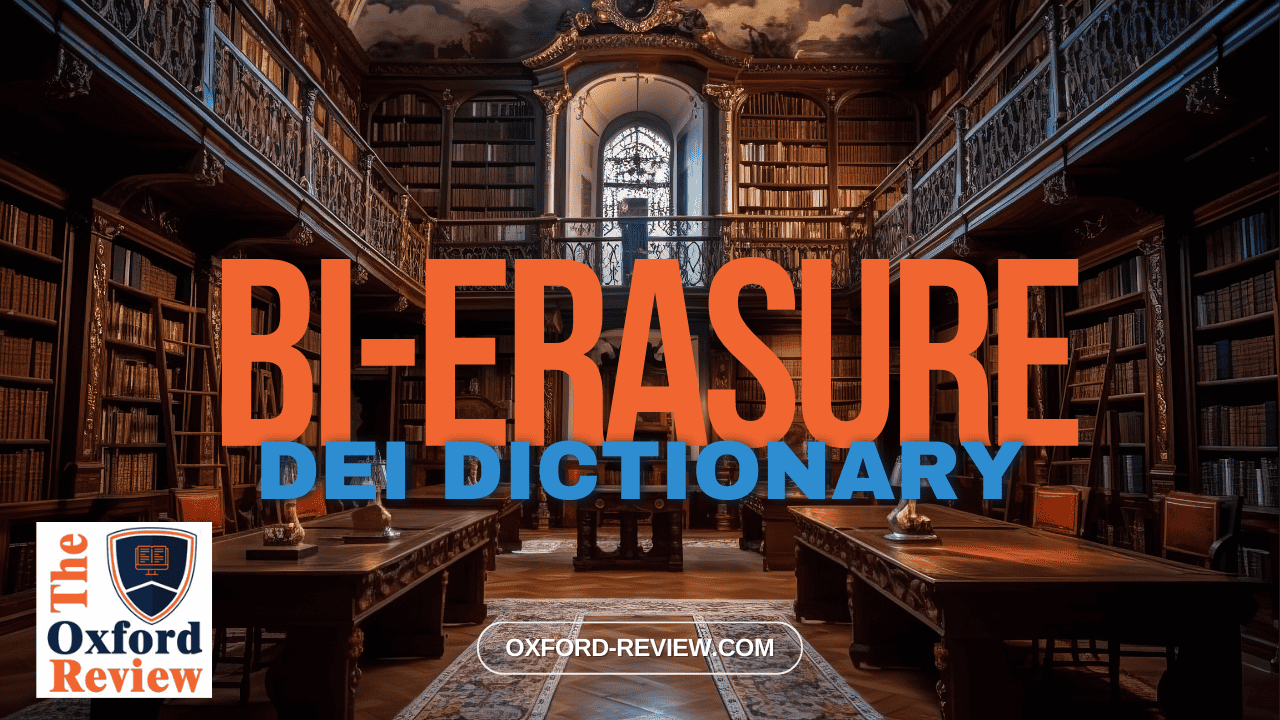Bi-Erasure – Definition and Explanation

Definition:
Bi-Erasure refers to the dismissal, negation, or minimisation of the existence and validity of bisexuality as a sexual orientation. This erasure manifests in various ways, including societal attitudes, media representation, and even within LGBTQ+ spaces themselves.
The Implications:
Bi-Erasure carries significant implications for individuals who identify as bisexual. It undermines their identity, erasing their experiences and struggles. This can lead to feelings of isolation, invalidation, and invisibility within both heterosexual and homosexual communities.
Manifestations of Bi-Erasure:
- Binary Assumptions: Society often operates under the assumption of a binary understanding of sexuality – that individuals are either heterosexual or homosexual. This erases the validity of bisexuality, perpetuating the notion that it is merely a phase or indecision.
- Media Representation: Mainstream media frequently overlooks or misrepresents bisexuality. Characters are often portrayed as either gay or straight, reinforcing the idea that bisexuality is nonexistent or irrelevant.
- Stereotyping: Bisexual individuals may face stereotypes from both heterosexual and homosexual communities. They might be seen as promiscuous, untrustworthy, or incapable of monogamy, further marginalising their identity.
Example:
In a popular television series set in the UK, a character who initially identified as bisexual had their sexuality erased over subsequent seasons. The character’s relationships were exclusively depicted as either heterosexual or homosexual, erasing their bisexuality from the narrative entirely. This erasure sends a harmful message to viewers, perpetuating the idea that bisexuality is temporary or non-existent.
Combatting Bi-Erasure
- Visibility: Highlighting diverse representations of bisexuality in media, literature, and public discourse is crucial in combating Bi-Erasure. Amplifying bisexual voices and experiences validates their identities and fosters understanding.
- Education and Awareness: Increasing awareness about bisexuality and its unique challenges is essential. Education can challenge stereotypes and misconceptions, fostering a more inclusive environment for bisexual individuals.
- Intersectionality: Recognising the intersectionality of identities within the LGBTQ+ community is vital. Bisexual individuals may face unique challenges based on factors such as race, gender, and socioeconomic status. Intersectional approaches to DEI efforts can address these complexities more effectively.
Conclusion:
Bi-Erasure is a pervasive issue within society and LGBTQ+ communities. Understanding its implications and manifestations is crucial in fostering a more inclusive and equitable world for all individuals, regardless of sexual orientation. By challenging stereotypes, amplifying bisexual voices, and promoting awareness, we can work towards combatting Bi-Erasure and building a more accepting society.
References:
Prieto, K. (2023). Strategic navigations of identity in the face of bi-erasure: Narratives of bisexual college student identity negotiation. Journal of Bisexuality, 23(4), 347-373. https://www.tandfonline.com/doi/abs/10.1080/15299716.2023.2254282
Telles, L. M. (2023). Bi Erasure and Bi Invisibility in Media and Medicine: Moving Beyond. https://academicworks.cuny.edu/gc_etds/5298/
Be impressively well informed

Get the very latest research intelligence briefings, video research briefings, infographics and more sent direct to you as they are published
Be the most impressively well-informed and up-to-date person around...
